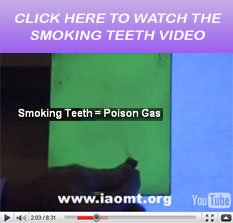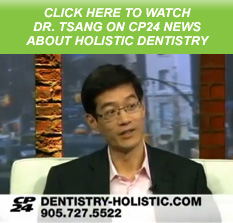Learning About Environmental Toxins
Learning about environmental toxins
Many environmental toxins are things that you cannot see, smell, taste or feel. We don’t realize we are being affected until we start to experience symptoms with a chronic disease after years of subtle and often consistent exposure. Considering the advanced state of medical technology, our society is seeing increasing numbers of cancers, immune system disorders, neurological problems, chronic fatigue syndromes, multiple chemical sensitivities, allergies and hormonal disturbances. A 2004 study in the British Medical Journal estimated that 75% of cancer is caused by environmental lifestyle factors, including exposure to chemicals. Another report by the Columbia University School of Public Health estimated that 95% of cancer is caused by diet and environmental toxicity.
Since the second world war, the number of industrial chemicals produced in North America has climbed to over 75,000, and more than 10,000 chemical solvents, emulsifiers and preservatives are used in food processing. These chemicals are absorbed into our groundwater, rivers, lakes and oceans; soils, spewed into the air and added to our food supply. The following are some of the most prevalent toxins:
1. PCB’s (polychlorinated biphenyls): Although banned for decades, past use still lingers and affects us. Most farm-raised salmon are fed fish that have absorbed PCB’s.
2. Pesticides & herbicides: Residue is commonly found in food.
3. Mould & fungal toxins: One third of people are allergic. One does not have to be allergic to be adversely affected.
4. Phthalates: Used to lengthen the life of fragrances and soften plastics which are often used to store food.
5. VOCs (volatile organic compounds): Found in carpet, paint, cleaning fluids and dry-cleaned clothing.
6. Dioxins: Caused by burning waste or fuel and ingested when we eat animal fat.
7. Asbestos: This insulating material used in North America from the 1950’s to 1970’s releases fibers into the air as it ages. The Quebec government is currently promoting a resurgence of asbestos mining to export it to developing countries like India.
8. Heavy metals: Arsenic, mercury, lead, aluminum and cadmium accumulate in the soft tissues of the body. A combination of these toxins has a much worse effect than each individually.
9. Chloroform: Used to make other chemicals and is formed when chlorine is added to water.
10. Chlorine: Found in household cleaners and used in some industrial processes. Added to municipal drinking water supplies.
Action Plan:
Environmental toxins interfere with your body’s natural ability to heal itself. If you remove the interference, your health will improve. Here are some tips on how to limit your exposure:
1. Eat organic produce and free-range, organic animal products such as eggs, dairy and meat. Eat a variety of fresh fruits, vegetables and animal products. Buying from local farmers supports the local economy and reduces gasoline required to transport over long distances. Eat ancient grains and minimize or eliminate wheat and wheat gluten.
2. Consume a high-quality purified fish oil instead of eating contaminated fish. Choose fish from less polluted waters and avoid farmed fish which have hormones and antibiotics added.
3. Avoid processed foods and artificial additives including sweeteners and MSG (monosodium glutamate). Avoid white sugar and replace with natural sweeteners such as honey, maple syrup, agave, stevia, raw cane sugar.
4. Use natural detergents, cosmetics and toiletries.
5. Ask a qualified biological or holistic dentist to replace your metal amalgam fillings, a major source of mercury, while using safety precautions to minimize your exposure to harmful mercury vapours generated by drilling.
6. Avoid air fresheners, dryer sheets and fabric softeners. Choose a dry cleaner that offers a ‘green’ solution such as using pure liquid silicone. Most dry cleaners use Perc which is perchloroethylene.
7. Get plenty of safe sun exposure. During our long Canadian winters consider supplementing with vitamin D3.
8. Test your tap water and install filters if necessary. Reverse osmosis filtration is the only way to remove fluoride from municipal water. Install shower filters to minimize the chlorine vapours.
9. Limit drugs, both prescription and over-the-counter. Learn about healthier alternatives like herbal remedies, essential oils, homeopathic remedies. When supplementing with vitamins, choose natural source instead of synthetic chemical-based ones.
10. Keep your spine and nervous system healthy with regular chiropractic care. Other therapies such as massage, shiatsu, acupuncture, physiotherapy, craniosacral therapy can help remove energy blockages and allow the body to self-heal.
11. Exercise regularly to improve circulation and maintain flexibility and mobility. Qi gong, tai chi, yoga are gentle and effective ways to meditate while moving the energy through our bodies and minds.
12. Perform regular liver, kidney and colon cleanses with natural ingredients and herbs. Seek the advice of a natural doctor or holistic nutritionist for serious ailments.
Holistic dentistry gives deep emphasis on the use of non-toxic restorative materials in different dental applications. The concept of holistic dentistry is centered on the premise that when an infection occurs in the mouth this can disrupt the normal function of the whole body. Unlike traditional dentistry, the holistic approach tries to connect the relationship of the mouth to the rest of the body.
A holistic dentist avoids the use of invasive chemicals because they considered them as poisons to the body. Remarkably, North American dental schools are still teaching students to use amalgam fillings. The truth is the amalgam filling used in traditional dentistry is made up of about 50% mercury. Mercury, as we all know, is a very dangerous and poisonous substance. Holistic dentists refuse to use these fillings when treating their patients because they perceive the materials used by conventional dentists as toxic. In fact, the drilling out of the amalgams releases a large amount of mercury vapour which is potentially toxic to the patient, dentist and assistant. Many safety precautions and great care is taken by holistic dentists to minimize the risk during the removal of amalgams. Instead of just focusing on the gums and teeth, they are more concerned on the patient’s entire well-being. Connections are made between the teeth and rest of the body via the acupuncture meridians.

